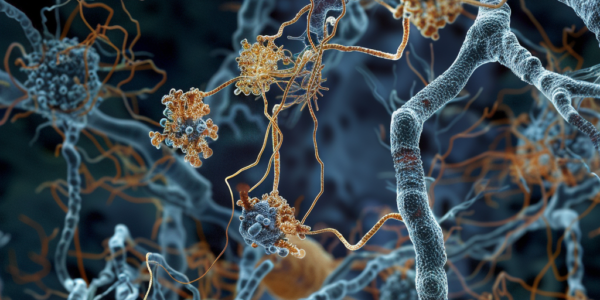Alzheimer’s Research Paper Retracted Due to Image Manipulation Allegations
A landmark Alzheimer’s disease research paper published in Nature in 2006 is being retracted due to allegations of image manipulation. University of Minnesota (UMN) Twin Cities neuroscientist Karen Ashe, the senior author of the study, has acknowledged that the paper contains doctored images. The retraction raises questions about the trustworthiness of researchers in the scientific community and underscores the need for rigorous oversight and scrutiny in scientific publications to maintain credibility.
Study Reveals Similarities in Protein Structures Between Alzheimer’s Disease and Down Syndrome
A recent study published in Nature Structural and Molecular Biology has utilized advanced cryo-electron microscopy imaging technology to investigate the similarities in protein structures between Alzheimer’s disease and Down syndrome. Lead investigator Ruben Vidal, Ph.D., highlighted the presence of amyloid β (Aβ) and abnormal accumulation of tau protein in individuals with both Down syndrome and Alzheimer’s disease. The study aimed to determine whether differences exist in the protein structures of Aβ and tau filaments between individuals with only Alzheimer’s disease and those with both Down syndrome and Alzheimer’s disease. The research team conducted a comparative analysis of high-resolution images of Aβ and tau filaments in individuals with Down syndrome and Alzheimer’s disease, and those with only Alzheimer’s disease. Vidal emphasized the potential implications of their findings, suggesting that the study may pave the way for improved treatments for both Alzheimer’s disease patients and individuals with Down syndrome. This study sheds light on the common mechanisms at play in individuals with sporadic Alzheimer’s disease and those with both Down syndrome and Alzheimer’s disease.
Key Protein Identified in Development of Alzheimer’s Disease
Scientists have discovered a key protein, Mdm2, in the development of Alzheimer’s disease that, when blocked, could potentially slow or halt the condition’s progress. This discovery was made through tests on mice, where deactivating Mdm2 stopped the destruction of dendritic spines and synapses, crucial for brain cell communication. Understanding the role of Mdm2 in Alzheimer’s progression could be crucial in developing treatments for the disease.



